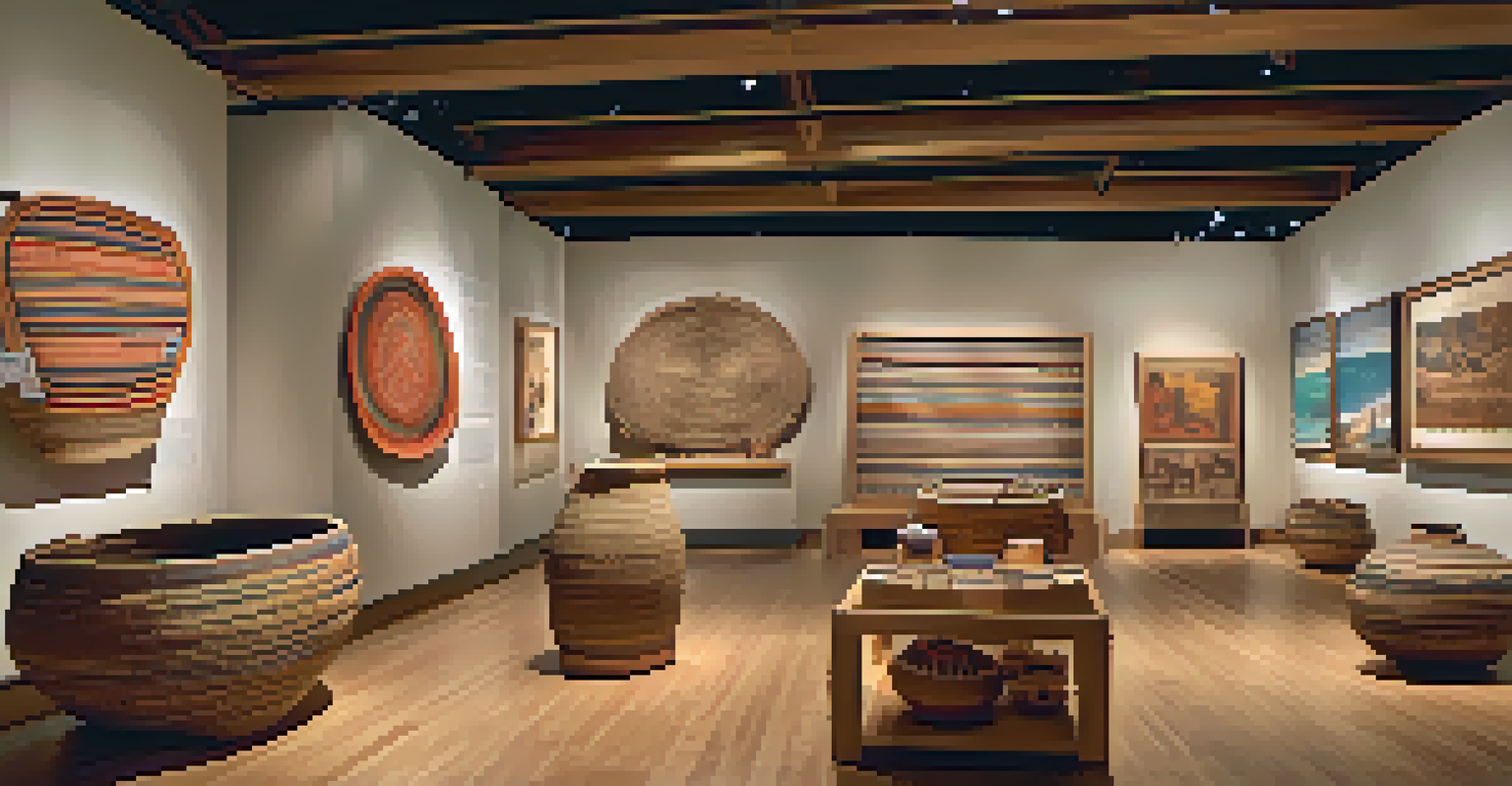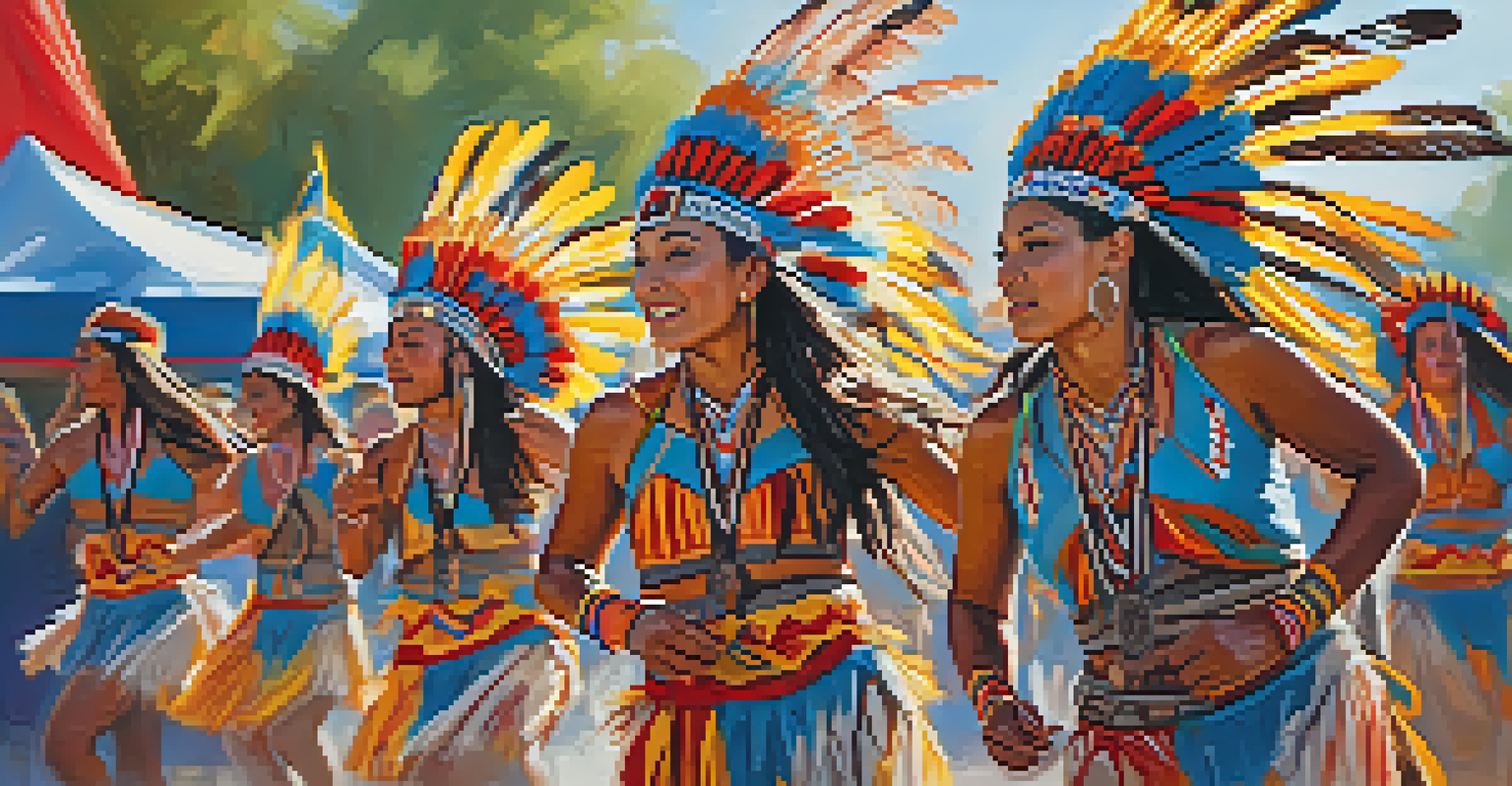Learn About Native American History at Sacramento Museums

The Significance of Native American History in Sacramento
Sacramento holds a unique place in Native American history, as it was once home to various tribes such as the Nisenan, who thrived in the region for thousands of years. Understanding this history not only enriches our knowledge of the area but also highlights the resilience of these communities. This historical context serves as a foundation for museums in Sacramento, which strive to honor and preserve Indigenous cultures.
History is not a burden on the memory but an illumination of the soul.
Many museums in the area actively collaborate with Native American communities to ensure authentic representations of their stories and traditions. These partnerships help to bridge the gap between past and present, allowing visitors to engage with history in a meaningful way. By spotlighting the contributions of Indigenous peoples, these institutions foster a greater appreciation for their enduring legacies.
Visiting these museums provides an opportunity to reflect on the challenges faced by Native Americans throughout history, including colonization and cultural erasure. It encourages a deeper understanding of their ongoing struggles and achievements, making the exploration of Native American history both relevant and poignant.
Key Museums to Visit for Native American History
Sacramento boasts several museums that feature significant Native American exhibits, each offering unique insights. The California State Indian Museum is a must-visit, showcasing artifacts that illustrate the rich cultural heritage of various tribes in California. From traditional clothing to tools, the museum provides an immersive experience that brings history to life.

Another essential stop is the Sacramento History Museum, which often hosts exhibitions focused on the region's Indigenous peoples. Through engaging displays and educational programs, visitors can learn about the historical interactions between Native Americans and early settlers. This museum effectively contextualizes the complex narratives that shape Sacramento's past.
Native American History in Museums
Sacramento museums actively showcase and preserve the rich history and culture of Native American tribes through authentic exhibits and community partnerships.
Don’t forget to check out the Crocker Art Museum, which occasionally features Indigenous art and cultural exhibitions. These artworks highlight contemporary Native American perspectives, allowing visitors to appreciate both historical and modern contributions. Engaging with these pieces fosters a deeper understanding of the ongoing influence of Native American culture in today's society.
Educational Programs and Workshops Available
Many Sacramento museums offer educational programs and workshops focused on Native American history, making them excellent resources for schools and families. These programs often include hands-on activities, storytelling sessions, and guided tours led by knowledgeable staff or Native American community members. This interactive approach makes learning about history fun and memorable.
The past is never dead. It's not even past.
Workshops may cover various topics, such as traditional crafts, language preservation, or Indigenous ecological practices. By participating in these activities, attendees gain a deeper appreciation for the skills, knowledge, and cultural significance embedded in Native American traditions. It also emphasizes the importance of preserving these practices for future generations.
Moreover, these educational initiatives encourage dialogue about the contemporary issues facing Native American communities. By fostering conversations around topics like sovereignty and representation, museums help visitors connect historical events to current realities, making the learning experience not just informative but also impactful.
Engaging with Native American Voices
One of the most enriching aspects of visiting Sacramento's museums is the chance to engage with Native American voices. Many museums feature guest speakers, panel discussions, and cultural demonstrations led by Indigenous artists, historians, and activists. These events provide firsthand perspectives that deepen visitors' understanding of Native American experiences.
Listening to stories directly from community members fosters a sense of connection and respect for their narratives. It breaks down stereotypes and promotes empathy, allowing visitors to appreciate the complexities of Indigenous identities. This engagement also highlights the ongoing contributions of Native Americans to the cultural landscape of Sacramento and beyond.
Educational Programs Enhance Learning
Interactive workshops and educational programs at these museums engage visitors with Native American history, promoting dialogue and appreciation for Indigenous cultures.
Incorporating Native American voices into museum programming allows for a more authentic representation of history. It underscores the importance of honoring Indigenous perspectives, ensuring that their stories are told accurately and respectfully. Such initiatives pave the way for a more inclusive narrative in the preservation of history.
The Role of Art in Native American History
Art plays a vital role in expressing Native American history and culture, and Sacramento museums often showcase stunning examples. Traditional artworks, such as basketry, pottery, and beadwork, reveal the skills and creativity of Indigenous artisans. These pieces not only serve as aesthetic objects but also carry deep cultural significance and storytelling elements.
Contemporary Native American artists are also featured in local exhibitions, bridging the gap between historical and modern expressions. Their works often address themes of identity, resilience, and activism, reflecting the ongoing journey of Indigenous peoples. This fusion of old and new provides a comprehensive view of how Native American culture has evolved over time.
By highlighting the importance of art, museums create a space for dialogue about cultural identity and heritage. Visitors can explore how art serves as a medium for preserving traditions while also addressing contemporary issues. This dynamic interplay enriches the overall understanding of Native American history.
Special Events Celebrating Native American Culture
Sacramento's museums frequently host special events that celebrate Native American culture, providing opportunities for community engagement. Events like powwows, cultural festivals, and art displays bring together diverse audiences to appreciate Indigenous traditions. These gatherings create a vibrant atmosphere, fostering connections between Native American and non-Native communities.
During these events, visitors can enjoy traditional music, dance, and storytelling, immersing themselves in the richness of Native American culture. Engaging with these performances allows participants to experience the living aspects of history, making it more relatable and impactful. It’s a wonderful way for people to learn, celebrate, and honor Indigenous histories.
Art as a Cultural Expression
Art plays a crucial role in expressing Native American history, with museums highlighting both traditional and contemporary works that reflect the evolving cultural narrative.
Additionally, these events often include workshops and discussions that encourage attendees to reflect on their own roles in promoting cultural understanding. Such initiatives empower individuals to become advocates for Indigenous rights, reinforcing the importance of allyship in contemporary society. Participating in these celebrations is a step toward creating a more inclusive community.
Visiting Sacramento Museums: Tips for a Meaningful Experience
If you're planning a visit to Sacramento museums to learn about Native American history, a little preparation can enhance your experience. Start by checking the museum's website for any special exhibits or events that align with your interests. This will help you make the most of your visit, ensuring you don’t miss out on any valuable opportunities.
Consider joining a guided tour if available, as knowledgeable guides can provide deeper insights and answer questions. Engaging in conversations with staff and fellow visitors can also enrich your understanding of the exhibits. Don't hesitate to ask questions or seek clarification on topics that intrigue you; curiosity is key to learning.

Lastly, take the time to reflect on what you've learned during your visit. Whether through journaling, discussing with friends, or further research, extending your engagement beyond the museum allows for a more profound understanding of Native American history. By doing so, you contribute to the ongoing dialogue about Indigenous cultures and their significance in today's world.